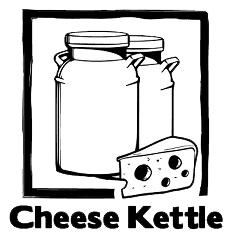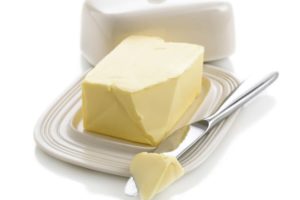Cultured butter what it is and what is the difference between cultured and ‘standard’ butter?
first things first – little bit of a history
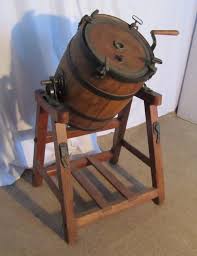
Butter is created of animal fat, water, and a few milk proteins. business butter is 80–82 % milk fat, 16–17 % water, and 1–2 % milk solids aside from fat (sometimes named as curd). it’s going to contain salt , intercalary on to the butter in concentrations of one to a pair of %. Unseasoned butter is usually named as “sweet” butter. this could not be confused with “sweet cream” butter, which can or might not be preserved. Reduced-fat, or “light” or no fat butter, butter at four-hundredth fat … Well, we tend to shall opt for to not discuss that here.
In the Australia, butter should contain eightieth minimum animal fat by law, whereas in France, butter should be composed of a minimum of eighty two fat. Home churned butter are going to be right up there within the eighty six vary. business butter may be a terribly uniform dispersion of water in oil. The eightieth target fat level and continuous churn process need such a product.
Batch-churning cream into butter takes concerning half-hour, however it’s solely within the previous couple of minutes that the butter begins to create. In Brief, the mechanical agitation of the churning method breaks down associate degree emulsifying membrane around droplets of animal fat, permitting the animal fat to solidify as butter.
Farm Butter
In XX century most farm wives were skilled butter manufacturers. Butter sales were done localy and made on family farms and in little creameries or family owns dairies. This butter was typically created in very small batches.
Traditionally, butter creating began with the separation of cream from milk by gravity. Simply after milking, the milk was allowed to sit down in pans or cans till the cream, being lighter, floated to top of the milkcan. The cream was collected off and keep in an exceedingly cool place for some days. When many days’ later, cream volume had accumulated, it has been churned into butter.
This very small scale butter making process took time and energy, however only required simple and straightforward equipment. Very basic butter churners have been used in rural parts of USA within the mid-20th century. Great Britain became less common for average families make their own butter within the course of the nineteenth century, and start outsourcing churning process to the larges factorys. However simple setups were still used on small farms and within the family owned dairies until XXI century.
It’s long tradition to cultured the cream before churning. Culturing was the by-product of the necessity to store few milking’s before churning. There was no refrigeration, therefore the cream was keep in a cool space (often a basement) and therefore the natural microorganism from the milk worked to culture it.
After few days , the cream was cultured and placed within the churn for further processing. little home producers would typically collect some days of milking to own enough cream for churning, and therefore the natural fermentation would “ripen” the flavour. The cream would, of course, ripen abundant faster throughout the nice and cozy months.
Novadays processors
Thosedays dairy practices tend to forget about seasonal variations by feeding cows an unnatural eating regimen of year-round grain. In case you frequently will make butter from proper cream, you may start to be aware changes because the seasonal changes.
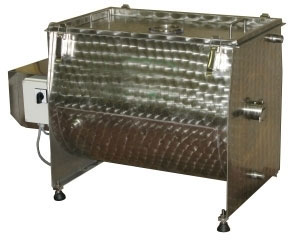
Cream is skimmed from pasteurised full cream milk in commercial centrifugal separators spinning at 30,000 RPM. The skimmed cream consists of 40% butterfat, and is known as heavy, or whipping cream. From the separator, the heavy cream travels immediately into commercial butter churners, which change liquid cream it into sweet cream butter and excessive-fats buttermilk. The buttermilk is excessive fat because ribbon churns are not very efficient at churning all the butterfat into butter. This buttermilk is then re-separated to put off the extra butterfat, and dried for business packages together with industrial ice cream and baking products, in addition to consumer packaged goods like buttermilk pancake and baking mixes. The butter made this way is referred to as “sweet cream” butter due to the fact the cream it was crafted from was now not cultured or acidified.
What do you need to make your own butter
Firstly is the Cream – the better quality your cream is, the better taste your butter will be. full stop.
Heavy cream is forty procent butterfat and sixty procent milk solids and water.
The cream from jersey cows produces the A grade butter because of its higher fat content milk, plus the truth that their fats is dispersed in larger globules than milk from different sorts of cows and tends to churn into butter extra easily. Colour of this cream is deep ivory to gold while it is from pastured cows due to the fact the plant life they devour have better beta carotene, which colorations the cream more than grain.
Handy trick: If you are getting very white butter you can try to add drop of anatto or few ml of carrot juice.
Nowadays industrial butter making process takes only few hours. Commercial butter is cultured and churned the same day to save time which equal’s to saving on wages. At convenience of your home or artisan factory, you can do much better job looking on quality V quantity.
Unpasteurised cream is obviously full of suited dairy bacteria and ferments and sours on its very own, without the addition of a bacterial subculture (starters). Fermentation through lactobacillus microorganism (bacteria’s) changes cream PH and add flavours to the finish product. Amongst other adjustments, it produces lactic acid, making the cream less “sweet” and more sour. Culturing process helps in breaking the two components: butter and butter milk.
HOW TO MAKE CULTURED BUTTER – STEP BY STEP
STEP ONE
Remember to sanitise your equipment before you will start. It’s vital when you work with a dairy products.
To culture your cream simply add mesophilic starter at the manufacture recommended dosage to around 30-32C cream leaving everything to culture for 6-24h. Temperature & time is essential in this equation. If the temperature will be to low you will need more time to incubate cream with mesophilic bacteria’s. Longer you will incubate the cream more flavour you will get from the butter. Test and trial will be the best option to begin.
STEP TWO
Once cream have been ‘cultured’ you can start process called churning.
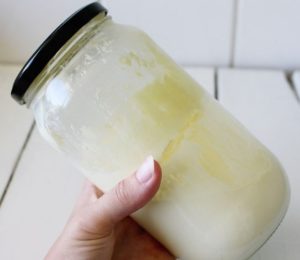
Fill your jar 25-50% complete of cream. The more cream you’ve got in the jar the longer it takes to form butter because there is much less movement of the cream and that is what makes the butter.
If you are using a blender, food processor, or mixer simplest fill twenty-fife to forty percent full. Turn on and watch the cream changes it’s body to thick cream and then start to separate.
Depends on cream, temperature, how lengthy you let it ripen, It will take around 10-20 minutes to churn.
you’ll subsequent note the sound of the moving cream changing because the cream turns from liquid to whipped cream. you will in the end observe that it will “spoil” because the butter separates from the buttermilk. As this occurs, note the colour of the cream as properly, it’s going to start to turn increasingly more yellow as the butter comes together.
STEP THREE
Rinsing the butter in very cold water is

This part of the process is very important- to preserve the butter and have nice ‘clean’ flavour. Churned butter still contain lactose and milk proteins remaining in the liquid. Those remains allowed butter to ferment and go off very quickly. the rinsing process and folding is what removes maximum of those two components. Cultured butter lasts longer due to the fact this lactose has been on the whole fermented out to lactic acid.
Add a few fresh cool water cups and rinse the butter through kneading and folding in the bowl (as you would be working on a bread , do that or three instances till the water is pretty much clear).
Pour off the very last rinse water and continue to knead with a spoon or hand till it forms a pleasant ball, you will notice you may be running water out of the butter. If the butter is just to
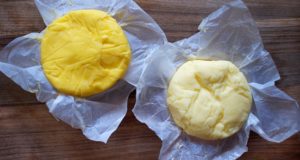
o gentle, placed within the fridge to harden.
The butter you simply made can now be pressed flat or rolled into a ball and wrapped or pressed into a special butter mildew -for the aesthetics.
